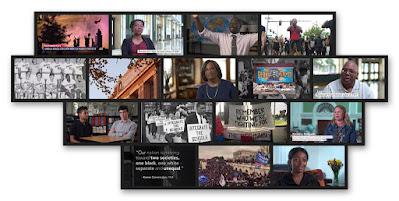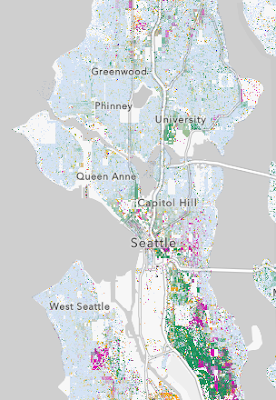Whether you grew up here or just moved here for law school, you'll learn a lot about race in Seattle by watching the new documentary, Roosevelt High School: Beyond Black and White.
 |
| Composite of images from Roosevelt High School: Beyond Black and White |
Roosevelt High School is just under two miles north of UW Law. In the 1960s, it was almost entirely white, because of residential segregation shaped by redlining and other factors. See Segregated Seattle, by the Seattle Civil Rights & Labor History Project.
In the late 1960s, the Seattle Busing Voluntary Racial Transfer Program (VRT) brought a few dozen students of color to Roosevelt. Fifty years later, as protestors went to the streets over police treatment of Black Americans (as well as other inequities), some members of the class of '71, of different races, began talking (over Zoom) about their experience and their city. Why were so many issues the same as decades ago?
They formed a group, Roosevelt Alumni for Racial Equity (RARE), which has grown beyond Roosevelt and beyond alumni.
This week, RARE premiered a half-hour documentary, Roosevelt High School: Beyond Black and White (31:00), which looks at race and education. It is thoughtful and thought-provoking. It includes interviews with alumni from that first group of busing students, as well as students, teachers, and administrators from today. One of the key people behind the film is UW Law Professor Emeritus Lea Vaughn, a member of that RHS class of '71.To explore racial patterns today, visit the 2010 and 2020 Census Map Viewer for Seattle and the Region. The interface lets you create different views of the city. For example, here is a map showing the racial make-up of Seattle. The area north of the UW is almost all light blue––the code representing people who identify as White. East of downtown and moving south, magenta dots represent Black or African American (not Hispanic or Latino) residents. And the green in the university district and south end represents Asian (not Hispanic or Latino).
Seattle is not as segregated as it was in the 1960s, but it clearly has neighborhoods that are largely one race or another. In 2010, a Seattle Times analysis ranked US cities by percentage of White residents, and Seattle was fifth. Now Seattle has diversified a tiny bit (our city is now sixth) and it is diversifying at a faster rate than many other cities. Gene Balk, Seattle Ranks as Fifth Fastest-Diversifying Big City of the Decade, Seattle Times (Sept. 30, 2021).
Take half an hour to watch the video. If you have a little more time, explore some of the other resources on RARE's website, which has a curriculum guide for using the film in classes.
While you shouldn't limit your learning about these topics to one month, this is a good way to kick off Black History Month.


No comments:
Post a Comment